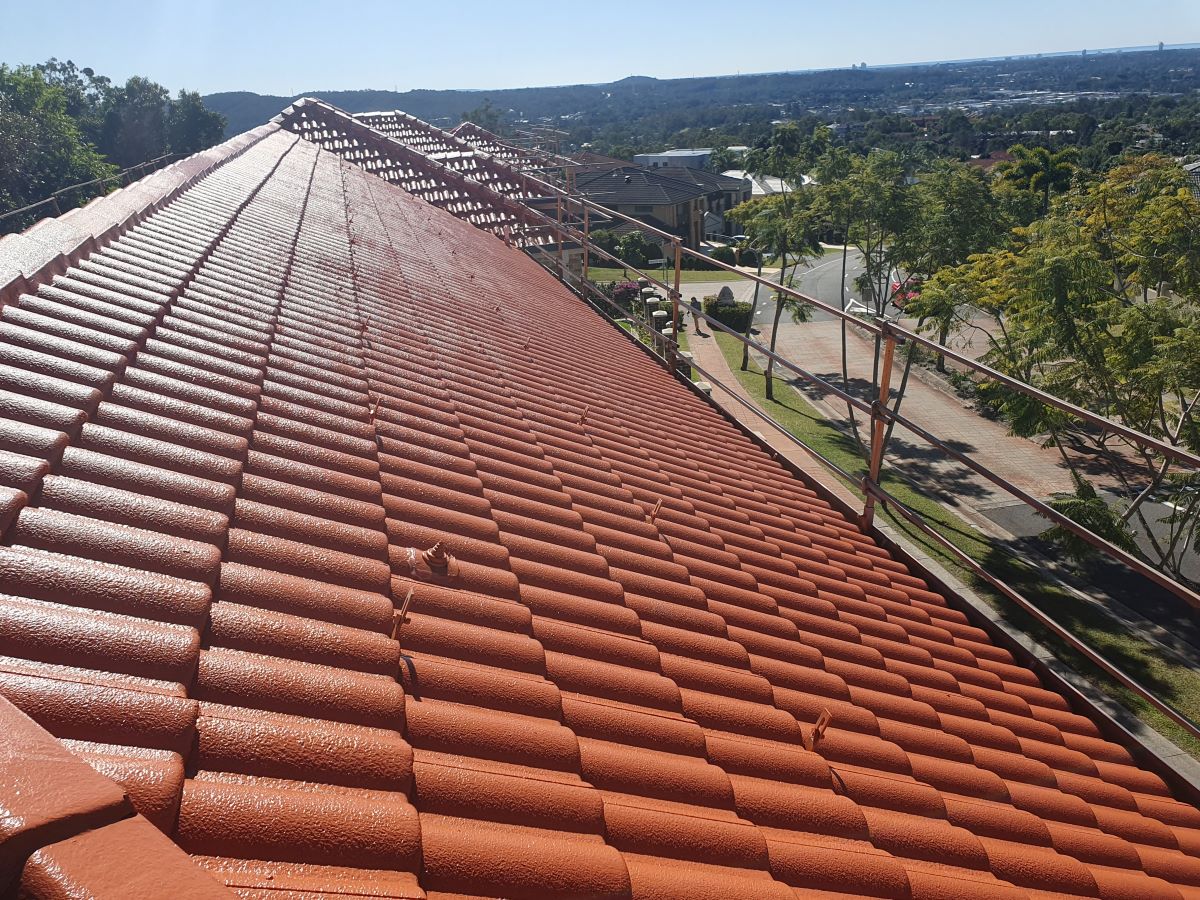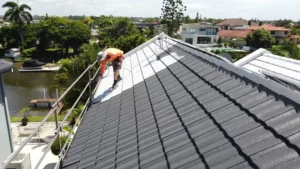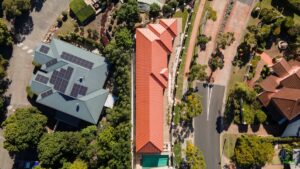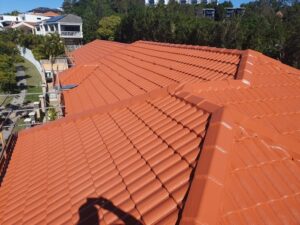Through our extensive experience with thousands of roof restorations, we have identified several common questions that many new clients typically ask. One of them most commonly is question around the different roof heat loading that may be experienced with darker colours and as to whether we recommend the client choose a lighter seemingly cooler colour. The answer may be somewhat obvious, being the darker the roof the less solar reflectivity and the hotter the roof surface will become. However there are several options and points to consider as this article will cover.
What is heat reflective roof paint?
Heat reflective roof paint or membrane is effectively an enhanced version of the regular product which contains small amounts of additives that increase two important factors, being, solar reflectance and emittance. As you may have guessed the solar reflectance is simply a measure of how much solar radiation the surface is able to reflect back into the atmosphere rather than absorbing and transferring into the roof space and ultimately the home. The emittance factor just measures how effective the product is at radiating the latent heat it has already absorbed back into the surrounding atmosphere.

Is heat reflective roof paint worth it?
The answer to this really depends on the ultimate performance of the heat reflective membrane / paint and the amount paid for it. Roof restoration in Brisbane is a popular service, and a high-quality heat-reflective roof membrane like Thermobond by Shield Coat provides excellent value to consumers. The product performs extremely well in reducing the heat loading on the property especially in the lighter colours. When looking at cost of product vs ongoing savings in heating costs it really delivers great value and in commercial applications can really be stated as giving a great return.
Cooling Cost Reduction
A top quality heat reflective paint / membrane can reduce cooling costs in the peak of summer by up to 30%.
A case study undertaken by ShieldCoat on a Queensland school project found that energy costs directly pertaining to running air conditioning services dropped by 10% – 20% following the application of Shield Coat Thermobond.
They found the greatest reduction was when ambient air temperatures were above 29 degrees. The data for the case study was independently sourced by a company called Ergon Energy.
Another case study done with the same Shield Coat product was on a large shopping centre in Queensland. This study focused on the roof temperature and found that the roof surface temperature was reduced by 9.3 degrees at peak solar radiation exposure (around midday). Data for the study again sourced from Ergon Energy.
What is the TSR with heat reflective roof paint?
The TSR percentage is an over all measure of a respective roof colours thermal performance. Standing for Total Solar Reflectivity it allows the home owner to choose between colours and really gauge how “hot” each colour may be when compared to the next. The Dulux Acratex range of roof coatings state the TSR for every colour and this can be very helpful to the home owner about to select their new roof colour.
Are some roof colours better for heat than others?
As a quick guide to the TSRs of some of the most popular colours:
Darker colours and Greys:
- Monument – TSR 9%
- Woodland Grey – TSR 12%
- Colourbond Basalt – TSR 12%
- Colourbond Shale Grey TSR 21%
The brighter and more pastel colours have a significantly higher TSR when compared to the Greys:
- Colourbond Surfmist – TSR 64%
- Classic Cream – 66%
- Paperbark – 48%
Click here to download the Dulux Acratex Colour brochure containing TSRs for all colours
Application Process
When applying heat reflective roof paint, the focus is on meticulous surface preparation, choosing the right paint, and employing proper application techniques to ensure a durable and effective finish.
The application process itself is identical to that of non heat reflective roof paint / coating. The roof must first be thoroughly pressure cleaned with all debris, dust and grime removed. The next stage is the primer coat. The primer will generally be the same whether the roof is going to be heat reflective or not. The final stage is to apply two general coats of the coloured external heat reflective roof membrane and thats it.
FAQs
The following FAQs provide specific insights into the practicalities and considerations when selecting heat reflective paint for roofs.
The leading products include Dulux® AcraTex® Cool Roof with InfraCOOL® Technology and Shieldcoat's Thermobond HRC, which are known for their reflective properties and quality in the Australian market.
Heat reflective paints are available in various colours, including lighter shades such as white, beige, and light grey, which typically offer better reflectivity compared to darker colours.
Need more help? Our team of experts is eager to answer any questions you have about heat reflective roof paint and guide you through the options that best suit your home. Don’t hesitate to reach out – contact us today for personalised advice.



